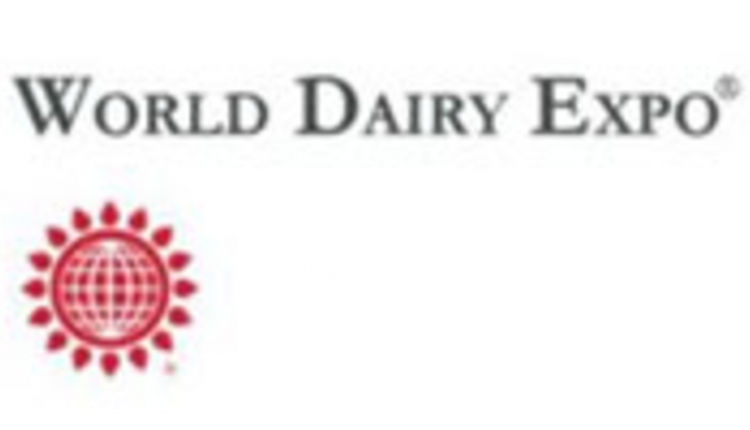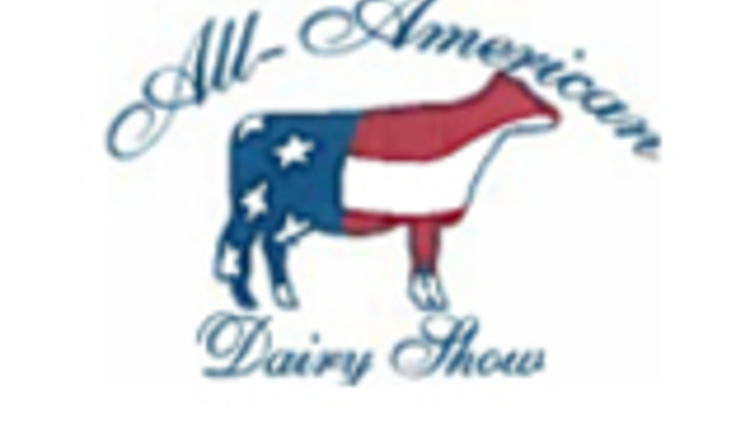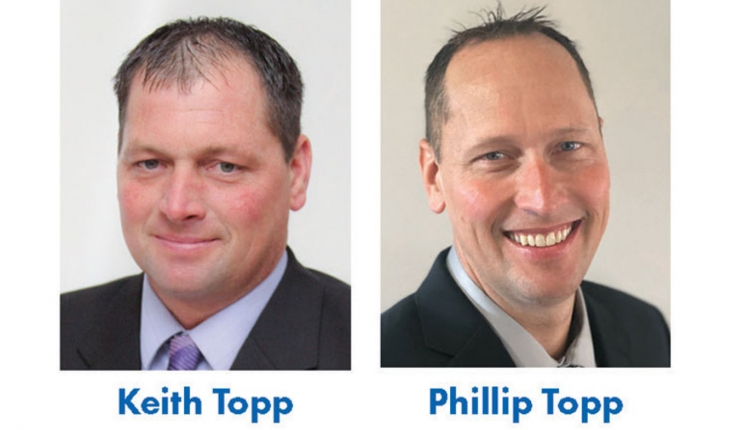As an event inspired by an idea from a group of well-known dairy pioneers to showcase the best dairy cattle, World Dairy Expo has grown with grace over the past 50 years. From growing in cattle numbers to adding a large commercial trade show and the formation of the Dairy Cattle and Commercial Exhibitors Committees to the most recent facelift of the New Holland Pavilions, Expo has been working to meet its growth and evolution. In this article, three distinguished Klussendorf and Klussendorf-MacKenzie honorees, Norman Nabholz, Richard Caverly, and Ken Empey Jr., share their thoughts and experiences on how the show has evolved.
A must attend
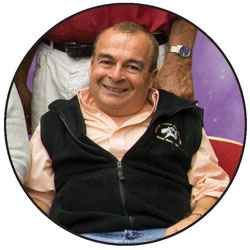
“World Dairy Expo is the most important dairy show in the world, and if you are involved with any aspect of the industry, it is a must attend,” Nabholz says. “Over the years, I have seen the cattle exhibits change from ‘breeder displays’ to ‘gathered groups’ on a large part and the show itself has gained a more global appeal. As these changes have happened, the cost for exhibiting has skyrocketed.”
Richard Caverly of Clinton, Maine, was recognized with the Klussendorf-MacKenzie Award in 2013. His family owns Caverly Farms, while his wife, Beverly Donovan, is owner of Deer Hill Ayrshires. Throughout the years, Caverly has had the opportunity to work with some of the most prominent showstrings in the world, which include Brigeen Farms, Bovi-Lact, Bonnyburn, Piedmont, Lencrest, Kueffner Holsteins and Jerseys, and Arethusa Farms.
“My family sent two animals from Maine to the Ayrshire show in 1978. Fred Ave Klondike Flossy would be second Senior Yearling and Reserve Junior Champion to a heifer owned by David Bachmann of Pinehurst Farm, and Oak Ridge Bruis Helga that just had passed her 10th birthday would be first Aged Cow and Grand Champion. They went to Expo with the Winter Place Holstein herd that was managed by Klussendorf winner Lewis Porter,” he comments. “I believe the first year I attended Madison I went with Bonnyburn, and that year Bonnyburn Juno Spirit EX-94-2E was a 4-year-old.”
His wife took her cow, Sweet Pepper Black Francesca EX-94 3E, a legendary Ayrshire that won its class each of the three years it attended World Dairy Expo, while capturing Reserve once and Grand Champion twice. That adds up to five times that his family has actually had animals walk the colored shavings.
Caverly agrees with Nabholz when discussing his choice to attend Expo each year. “World Dairy Expo has replaced Ringling Bros. Barnum and Bailey as the Greatest Show on Earth if you are involved in the dairy industry,” he states. “When you can sit down with the likes of Rodney Hetts and have him tell you about his dad and friends discussing how ‘They needed a show’ and how Expo was built, and then look around and how the show has changed, it is amazing. These pioneers had the vision to know they needed to find a new location to host a national show, and that vision has turned into a great dairy cattle show and one of the 20 biggest trade shows of all industries in the United States.”
He adds that to him the vision of the Expo pioneers is incredible and when the show now attracts 2,500 head from all over North America, some traveling over 2,000 miles one way to compete, that is an accomplishment second to none. Then add the commercial exhibits, and suddenly all corners of the industry have come together to one central point.

Ken Empey Jr. of Ontario, Canada, has attended World Dairy Expo every year since 1976, when he started with Pinehurst Farms, then assisted Hanoverhill Farms and R. Dale Jones. Then, in 1988, he owned part of and exhibited the Grand Champion cow, Cathland Lilac EX-97, and was honored with the Klussendorf Award the same year. In addition to assisting with these herds and owning cattle outside the ring, Empey has enjoyed being the lead judge for five breed shows and the associate judge for two breed shows.
He has also served on the Expo Board of Directors since 2000 and was previously part of the Dairy Cattle Exhibitor Committee. Today, he resides in Ontario with his wife, Eva, and three daughters, Shasta, Ayla, and Sierra, where he runs a manure compost business and works various sales.
“I chose to go as a fitter in the beginning, and then in 1986 we had our first string,” Empey remembers. “Now World Dairy Expo has become one of my favorite shows, and I have developed a huge passion for it. The individuals who started it invested a substantial amount of time and mortgaged their farms to make their vision a reality, and I like being a part of maintaining that dream.”
Involved beyond the barn
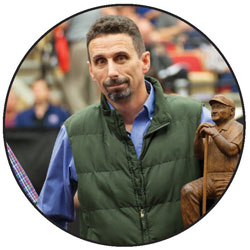
Along with assisting many outstanding exhibitors with their strings, Caverly has taken an active role in developing the Ayrshire breed show as he serves on the Judges Selection Committee. “Each individual breed has one of these committees, a committee I find very dedicated to helping Expo assure the best candidate available is in the center of the ring to judge the individual shows,” Caverly says. “When you have the greatest dairy cattle coming from all over North America from individuals who have dedicated themselves and their lives to presenting these animals at the highest level, it is important to have an individual in the center of that ring who is qualified to evaluate them and can do it in a manner which the cows remain the true focus.”
For Empey, serving on the Dairy Cattle Exhibitor Committee, the World Dairy Expo Board of Directors, and also the recent Building Committee for the New Holland Pavilions is another way to be a part of the big show. He is also very active in the Klussendorf organization, where he has served as president three different times and assists with selecting each year’s Klussendorf recipient and seven scholarships throughout the year. Also, as a former judge of the multiple breed shows, Empey pushed for an increase in compensation for judges and for tuxedos to be their official judging attire. Finally, he was involved in the Ethics Committee for the show, which he admits was a challenge but has now helped set a standard for other shows around the world.
Empey has seen various changes during his years of attendance and involvement with Expo. The first he says is the change in cattle, namely that they are more angular with higher, wider rear udders. In addition, the evolution of the cattle exhibits in the barn, as well as the trade show exhibitor portion of the show, are areas that Empey says have seen extreme growth.
Making memories
When asked about more memorable moments over the years, all three gentlemen cite different events.
“There really has been a lot for my family and our farm,” says Nabholz. “Namely, winning our first Grand Champion cow in 1973 and winning our first Premier Exhibitor banner would rank near the top. Also, being a part of the Pinehurst Farms’ group in 1976 (which won Premier Breeder and Exhibitor at all three national shows) was a thrill for me.”
“Ernest Kueffner told me years ago there are 8,760 hours in the year preceding Expo that we have to prepare, and with that in mind I have never been one to stay ringside and watch the show, as those final hours belong to someone else and it is out of your control at that point. However, there are a couple hours that stand out for me,” Caverly says.
“Watching Beverly at ringside as Francesca graced the colored shavings, knowing how much passion she had for that animal and dedication to her dreams — that is a memory that shall always stay with me,” he said. “I also have to smile when thinking about Ernest Kueffner and Gary Bowers and their master plan to get me to the ring for the Klussendorf-MacKenzie presentation as both knew I was not headed there on my own.
“To have long-time friends Gary Bowers and Dean Dohle standing beside me when they made that presentation is a moment I shall not soon forget.”
Empey says, “I have had the opportunity to work with Grand Champions and even lead a Supreme Champion, and those experiences all create wonderful memories. On the same hand, finding a cow for someone and watching her develop into a class winner or even more on the colored shavings is so rewarding for me. However, being involved with a world class event like Expo and rekindling friendships with people that you many times only see once a year is the best and most memorable part for me.”
Driving future vision
As all three award honorees reflect on where the show started, where it has been, and where it is going, they each offer a unique perspective with their experience and thoughts.
“I have seen the evolution of Expo from its infancy to the present and it is remarkable to say the least. Knowing some of the founders and most influential people in its growth (Norm Magnussen Sr., Howard Voegeli, Allen Hetts, and people like Dave Bachmann Sr. and Peter Heffering), I think they would be amazed at the growth of the show,” Nabholz says. “But also knowing the history of the prominent show before, The National Dairy Cattle Congress, will hopefully serve as a lesson that no matter how big or important the show is, complacency and misinformation can be the downfall of even the greatest dairy cattle show.”
Caverly concludes, “Around 2,500 of the greatest animals in the world will descend on Madison, Wis., the first part of October every year and only seven will leave as World Dairy Expo Champions! They will come with the best of the best, will be given every opportunity to compete at the highest level on a stage built by dairy farmers and industry personnel. Fifty years is an incredible anniversary executed by dairy farmers with a dream, a dream that started on the corner of a showbox!”
For Empey, being involved in multiple facets of Expo over time has given him an opportunity to see changes from an inside perspective. “The show has grown dramatically since its inception, and numerous changes have been made to accommodate that growth and expansion. I like the fact that the staff works with committees to get feedback from both the dairy cattle and commercial exhibitors, and I feel that the changes have made the show better and stronger and made its credibility second to none. I’m happy to have been involved with those changes and look forward to a bright future for the show.”

